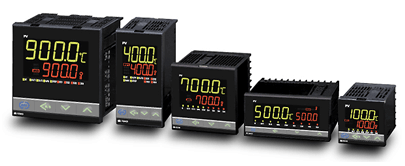1300 737 976
Call us
Live Chat
Call us

A large number of industries use temperature controllers, including packaging, plastics, heat treating, healthcare, food and beverage, furnaces, petrochemical and across all areas of general manufacturing. Industry examples of temperature controller applications are similar to the heating/air conditioning example used above. A basic temperature controller, like the RKC CB100 provides control of industrial heating and cooling processes. A temperature sensor is used measure the actual temperature. The temperature fed back from the sensor is constantly compared to the set point determined by the user. At any time where the actual temperature deviates from the set point, the controller produces an output signal. The output signal then activates heating elements or cooling components to bring the temperature back to the set point.

A controller also has an output. The output is used to control a particular process – turning on a heating or cooling process. An output can control an alarm or retransmit the value received, to a programmable logic controller (PLC) or recorder for logging of data.
Regardless of the type of controller chosen, they all work in much the same way. They control or hold a variable at a set value. The controller must set the input signal and set point value. The input fed back (process variable) to the controller is compared against the set point. If the values do not match, the controller creates an output signal based on the difference between the two. It also sends information on whether the reading is approaching or moving away from the set point. This prompts a response from the controller to provide an action to bring the values back into alignment.
An ON/OFF controller responds to a change in values by instructing the output to either turn on, off or remain in its current state. On/OFF control is just like operating a switch. It will turn on the heat where a process variable is below the set point and turn on when the variable is above the set point. ON/OFF controllers may include a delay, hysteresis or a cycle time when the process variable is near the set point prevent damage to valves and contactors. This means that a process variable must exceed the set point by a specific amount before taking an action. The CB Series are a suitable general purpose controller
A proportional controller decreases the power supplied to the process as the temperature approaches the set point. This allows the process to slow down as it approaches the set temperature and maintain a stable temperature. Proportioning is achieved by turning the output on and off for brief time intervals. The device proportions the time on and off to control the temperature. The proportioning action only takes place within a set proportional band around the set point temperature. When the process variable (temperature) is outside the band, the unit functions as an ON/OFF controller. An RKC F Series controller is a proportional controller.

Temperature controllers are available in standard sizes and are usually mounted inside an instrument panel and are sized in standard DIN sizes. In most cases a general purpose temperature controller will meet the needs of an industrial process, but more complex options are available to suit any process. There are a large number of controller options on the market. We choose RKC, due to the long standing quality we know and trust from RKC.
Copyright © 2022 Created by Pepper Digital
Disclaimer – Images for illustrative purposes only and may not be representative of the actual resolution of the camera shown.